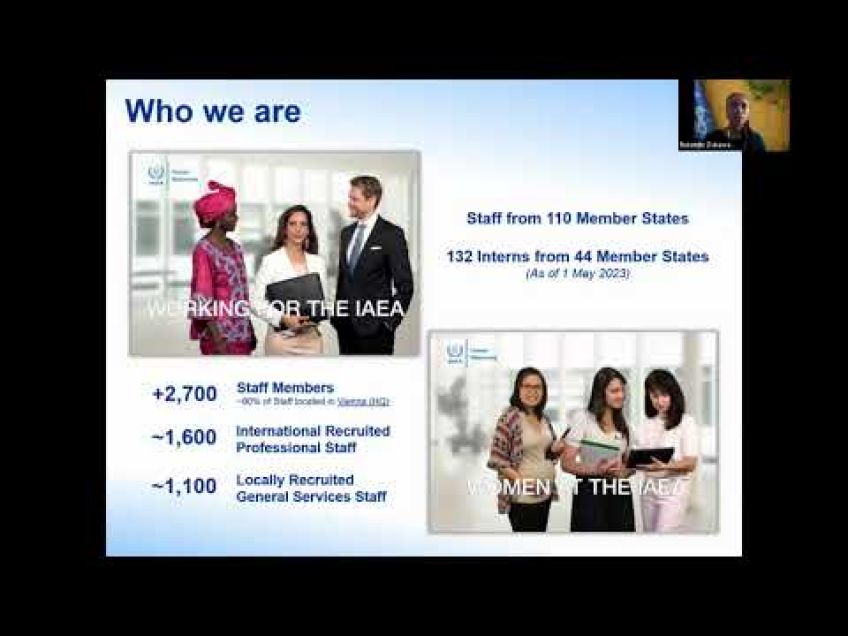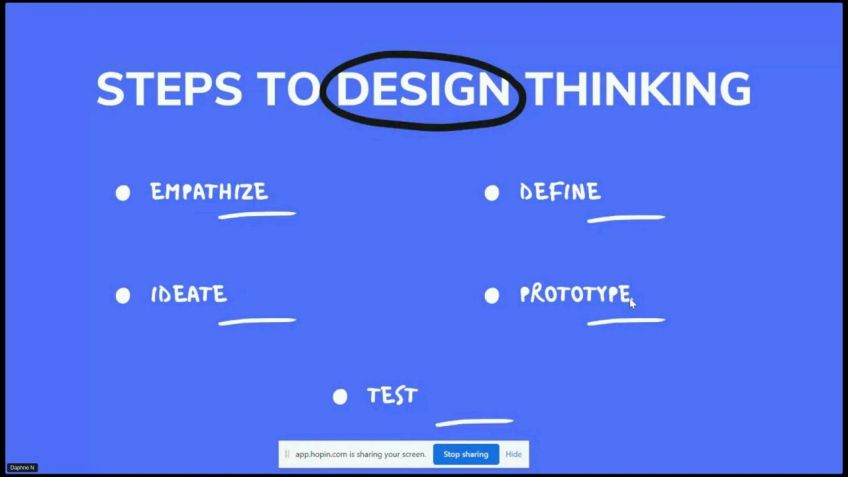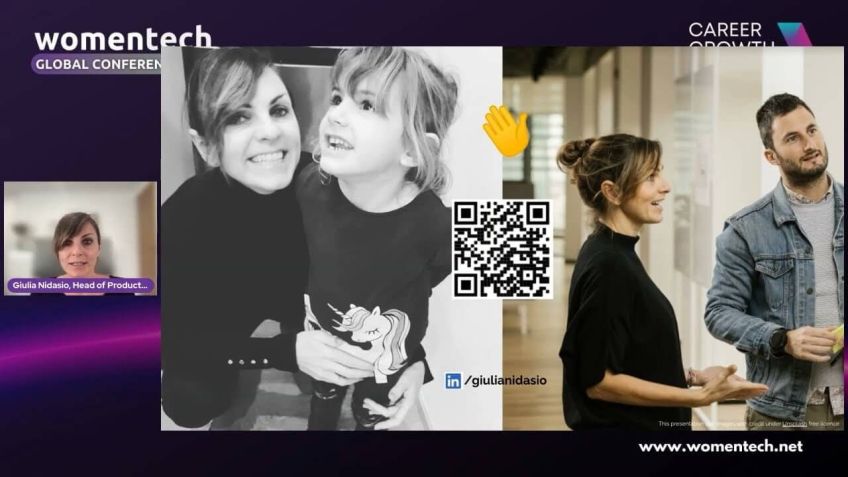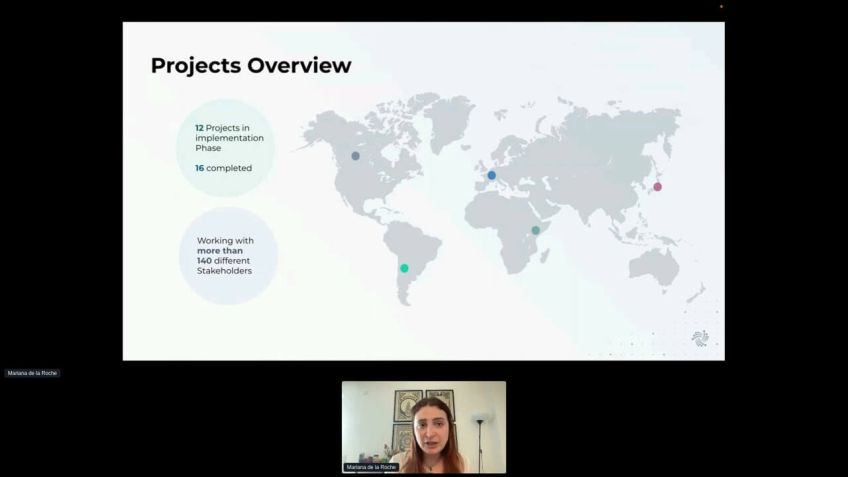How COVID changed Project Management by Aida Elsabban
How COVID-19 Has Transformed Project Management: An Insightful Exploration
Hello, everyone. I'm Ida Sagon, an experienced engineer with a PhD degree in electronics and communication from Egypt and currently serve as the minister advisor for military production. With over 30 years in the industry, I'm thrilled to share my insights and experiences in a session entitled "How COVID-19 Changed Project Management".
The Fundamentals of Project Management
Project Life Cycle
I'd like to start with a brief introduction to the project lifecycle. In a nutshell, it usually consists of the following four main phases:
- Identification
- Planning
- Execution
- Closure
Understanding Scope in Project Management
The first phase, identification, primarily involves defining the scope of the project. The scope ideally acts as a contract between the customer and the project manager, explicitly stating the aims, outcomes, technical specifications, and deliverables of the project.
However, a poorly defined scope can trigger what is known as scope creep - the phenomenon of the project's requirements changing or growing beyond its original goals, causing the project to prolong unnecessarily.
Project Priority Matrix
Following identification, the next important thing is establishing the project priority matrix, which involves time, performance, and cost considerations. These three parameters need to be conscientiously manipulated according to project goals, identifying which aspects can be constrained, enhanced, or tolerated.
Work Breakdown Structure and Responsibility Matrix
An essential part of the identification phase includes employing a work breakdown structure or a responsibility matrix in case of small or medium projects to divide the project into smaller, manageable tasks.
Planning Phase: The Creator of Project Roadmap
The planning phase is where comprehensive, time-bound strategies are put in place to ensure the project runs smoothly. It involves implementing project networks, creating Gantt charts for a holistic view of the project, devising a communication plan, and preparing a time-phased budget.
Another significant factor is actively identifying and managing potential risks that might disrupt the project's progress. Possible treatment of risks includes mitigation, avoiding the risk, acceptance, or transferring the risk to a third party.
Execution and Closure Phase
The execution phase is usually unique to the project type and relies heavily on the reports generated from each stage of the project implementation. Post-execution, the project moves into the closure phase, which involves several crucial tasks. These tasks include team and individual evaluation, auditing, learning from the project, closing activities, and archiving the project for future reference.
The Changing Face of Project Management: COVID-19 Impact
With all the technical aspects addressed, it is crucial to understand that project management has evolved into more than a science; it is also an art. It involves negotiations, politics, empathy, and understanding each stakeholder's unique perspectives.
COVID-19: A Catalyst for Change
The main focus of this session is to highlight the significant changes COVID-19 brought upon project management. It had both positive and negative effects; however, in my opinion, the positive implications outweigh the negative.
Positive impacts include increased productivity, possibility to hire top talents from across the globe, reduced turnover rates, decreased stress levels, and an improved work-life balance.
However, some challenges we should swiftly address include working with remote contractors, anticipating supply chain issues, managing risks, and controlling the cost implications brought about by the pandemic.
Making Sense of the COVID-19 Impact
So, whether it's raising awareness of the human factor, as shared by Claudia in the chat, or dealing with the logistical challenges of managing remote teams and broken supply chains - project management has indeed been reshaped by COVID-19, in ways that will likely impact our industry for years to come.
Certifications in Project Management
For those interested in deepening their understanding of project management, several prestigious certifications are available, such as Project Management Professional (PMP) and Certified Associate in Project Management (CAPM), among others.
With more than a million certified individuals worldwide, the PMP certification offered by the Project Management Institute is the top-ranked certification globally.
Conclusion
Thank you for your time and attention. You're welcome to share your thoughts on how COVID-19 influenced project management in the comments area, or reach out to me personally on LinkedIn. Together, let’s navigate these challenging times and adapt to the new face of project management.
Video Transcription
Hi, everybody. My name is uh Ida Sagon. I'm from Egypt. I am uh uh an engineer uh with a phd degree in electronics and communication uh specialty. I have more than 30 years in this industry and I am now uh the minister advisor for military production.So I welcome you all in my session entitled How COVID Change project management, where I will be able to share some of some of uh my experience uh in this field. Um in brief, because the session time is uh limited uh project life cycle in general depends on four main phases. It starts with the identification, then goes to the planning phase and then execution and terminate the project with the closing session in each phase. Uh There is more than uh uh one task that can be or must be done during this phase. Um um The main important uh task uh at the beginning of any project is uh in the identification phase is how to write the scope. The scope in general is the document that considered as the contract between the customer and the project manager uh to identify explicitly and very accurate, the uh objective of this project, the outcome of this project, the technical specification, the deliverables and this scope statement or document must be signed between the two parties.
Uh This will govern all the phases of the project. Now allow me to show you uh what could happen if this cop statement was not written as accurate as possible. So let us assume that the customer needs is this type of uh uh um handy uh carrying uh car or whatever we can call it. This is the customer need as you can see here. No, uh the description of the customers. It's just, it's just just simple red robust with wheels. This is the only description from the customer point of view. So this is a very blurred image about his needs because he actually needs more than this, but he cannot express his needs. So uh the task of the project manager must be to identify explicitly what he needs. So the architect will understand this, the core, not this one. And then the architect will finally describe to the people uh within the project itself that will implement the core will describe this and then the manufacturer will expect to do this. And this finally, this is what it developed. Now, we can see that it's impossible to compare between the two parties. So it's very important to describe the scope very accurately. Uh There is uh a an expression called scope creep. And this is if we did not describe the scope uh as accurate as possible.
Then lots of requirements will be required all over the time and accordingly the project will not finish. So uh uh moving to another important thing in the uh project is the priority metrics. There are three parameters that must be controlled, which is time performance and cost.
We must in the project itself identify which of them that must be constrained and which can be enhanced, which means modified to the better situation and which is can be accepted to be tolerated more than it is required. In this case, the cost can be increased a little bit time. We try throughout the project to enhance it which means uh decrease it and we are bound by the performance. Now, uh for the identification phase again, we have what's called the work breakdown structure, which it means that the project must be divided into very smaller tasks to be implemented or what we call responsibility. Matrix. Responsibility matrix is uh for the small and medium projects but work to break down structure is for large and very large scale projects for the planning phase. Uh There must be uh uh uh number of plans that must be achieved. First thing is implementing the project network and this actually means that uh we um uh let's say divide the tasks and the small tasks with its time to check which can be do in parallel and which must be serial and accordingly. According to the time that we are going to implement, then we make the gun short, gun short, actually give me the full image of the project and usually the project manager hang this gun chart on their back walls to always look at it what it is in reference and what is actual in order to check always the status of the project.
Also, in addition to this, there must be a communication plan and time phase budget, communication plan is um uh um it's a plan how the reports during the execution of the projects, how this uh reports will be delivered to each of the stakeholders of the projects. The stakeholders is anyone connected to the project? And actually it affects the projects, either suppliers, either uh customers, either managers, either uh uh approval provider, either the government, whatever. So depends on the stakeholder, there must be a report that is given to them according to his importance and his role in the project. Also the time phased budget with it, which is uh the division of the budget throughout the time. This is also must be planned very carefully. Another phase is the risk management process. As you can see from this risk even graph. Uh This uh graph shows that um the risks accompanied with the project itself. Uh It's a very large in the beginning because mm mm mm several and unknown parameters at the beginning of the project. But as soon as we start the projects and moving forward to the closure of the project of the, of the project, the risks decreases. But the cost to fix the risk if it happened is very high as we can see here in this graph. So risk management process go through four phases first identify and it's actually a proactive, not active, not reactive uh process.
So we must anticipate the risks and different risks that is going to happen throughout the project. And it is a group of people gathered together to try to identify every possible risk and then assess this risk if it is major risk or very minor and then how we are going to treat these risks. And actually, there are four possibility for this, either try to mitigate the risk, decrease its effect or it's likely to happen or avoid the risk by moving for moving to another technology in the uh project. For example, that will not uh use the risk technology or accept the risk like the earthquake, nothing can be done regarding this or transfer the risk to another third party with a cost of course, to uh take over this risk, then monitoring and report. So these are the main things that happened during the planning of the second phase of the project. Uh moving to third phase. It's actually the execution and monitoring and control and this uh it's kind of difficult here to um uh explain it here in this session because it mainly related to the project type itself and the reports that will come out from each phase of this uh project execution.
So after we execute this project and move forward uh to the and make the monitoring and control of these uh tasks, then we are moving to the closure of the project. And in the closure phase, there are uh um many deliverables that must be done. Uh For example, we must make a team evaluation to evaluate the team as a whole. It's homogeneous or not. Uh Everyone is performing his duty or task or not. There is an individual evaluation for each person. There are reports and audit on the project itself and lesson learned coming out of this audit in order to be put in the organization uh to benefit any uh future projects to learn from these lessons, either positively or negatively to avoid these lessons or these points. I mean, um also the up up closure activities, which is, for example, if you are going, if you are using uh machines, uh what we are going to do with these machines, uh the people themselves that uh contributed in this project, team members, um What we are going to do with them, how we are going to reallocate them in another project or another department.
So all of this must be done and the projects have its archiving file in order to get back, get back to it whenever required um I like very much this uh phrase, it says management is above all a practice where art, science and craft meet, what I explained before is only the art, the science section.
But actually these days, project management is not only science, it's an art itself. So it's a socio technical approach. The science we have, we've gone through it in the uh five or six slides before, but the art itself is dealing with the different stakeholder, dealing with the uh with the team members, dealing with the managers, negotiation skills, uh playing some politics. Uh in order to um achieve my goal as a project manager. The main task for me as a project manager is the success of this project. So each person must must have its own uh treatment, its own conversation. I must ask for the well being of my people, my team, if anyone is suffering from even personal problem, I must try to solve it. I must ask about this. All of this is the art of the project management and actually this is gaining much attention uh more and more these days. And maybe this will uh after one slide will guide us through. The main topic of this presentation is the effect of the COVID. Uh allow me first to uh give uh for who is interested to get a certification in this field. Uh Lots of cer certification can be achieved mainly.
Uh The first one is the P MP, which project management professional and uh uh it's considered as number one worldwide with a competitor of prints two prints two here is the uh uh well known certification mainly in UK and in Europe and Australia. But P MP is more known in USA, in America, in Africa, in Asia. Uh There are two certificates that can be or most famous in this area. The P MP as I mentioned and the CM which is, which is certified associate in project management. And this is mainly can, can be considered as an entry level and it does not require any uh additional uh let's say uh effort after getting the certificate, but P MP, no, it requires further activity. What's this number? This is actually the uh the number of people who already uh achieved the certification for the P MP. And this is according to PM I uh entity which gives this certification more than 1 million uh certified individuals and 314 chapters all over 214 countries. So it's a very well number. So sorry. So do you think COVID changed project management positively or negatively? You can write to me in the chat area. What do you think? OK. But from my personal point of view, it actually has its own both effects positive and negative, but I see it positively more than the negative side uh for the remote working which we will all were forced to do there.
Is if we do the balance correctly and if it's properly executed, there are lots of advantages that COVID has initiated in the project management area. One of them is increased productivity because the balance that already done during uh this working from home, increased productivity.
Um from my point of view as a project manager, access to top talent globally that I was not able to hire because they, the residence for them is very far from the location of my organization. Now, I can reach them and hire them reduce turnover rates because we actually reduced the locations for the organization. Since many of us working from home, reduced levels of stress because if I'm working woman and leaving my child in a nursery or something like this, then I will be concerned about my child. I will be concerned about my home. Now, I can uh properly manage both of them efficiently and improving work life balance. But on the other side, there is a careful consideration that must be uh taking into consideration. And this is my last slide, working with contractors that uh working far from me uh could jeopardize my project because they could, they could be suffering from financial um mm or political issues that not in my control. Then I will be surprised that surprised by their performance supply chain, I must be able to predict early as possible due to this COVID and any political and health issues that must, that will come, I must be prepared for my supply chain, uh, and prepare it earlier.
Risky medication. The risk is higher. So I must, uh, also, um, have a careful consideration, regard the risks more than ever and the cost application of course, because for example, if one of my team got sick, then, uh, I have to be careful about if he, uh, uh, come to the office, then I must, uh, make some, uh cleaning for the office.
I must close the office for a while. And this example for the cost that can be uh increased due to this uh circumstances. Uh I hope by this, I give you a brief about what uh we have uh suffered or gained during these days and uh anything, uh I'm really glad to answer it in just one minute. Uh Yes. Uh Claudia said that uh people made of it, awareness has been raised. Yes, people factor has been intensified. Yes. Uh Claudia uh excellent review. Thank you very much, Claudia. Um uh You can reach me as I'm uh due to the time you can reach me again in uh my linked in. I will put it again here and thank you for your listening. Thank you very much.





